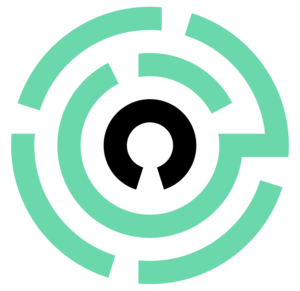Boost Onboarding ROI With These Skills Development Tips
The learning curve is what we call the rate at which employees learn the ropes of their new job. Too often, employers focus exclusively on how new skills will be delivered—and they completely forget to think about how the employee will learn those skills in the first place.

What Causes A Steep Learning Curve
There are a number of science-backed reasons why your new employees might experience a steep learning curve:
- The new environment may be drastically different from their previous one. Environment is a huge factor in learning—it’s why we learn best when we’re in an environment that is supportive, stimulating, and familiar.
- The onboarding experience might be stressful or anxiety-inducing. Anxiety has a huge impact on learning; it can lead to tunnel vision, disorganization, and memory problems.
- There might be a lack of clarity around job expectations. Employees need clarity in order to figure out what they’re supposed to do and how they’re supposed to do it. Without this clarity, they’ll be forced to spend a lot of time guessing and making assumptions.
- There might be a lack of support from managers and co-workers. New employees need guidance and feedback in order to learn their new job quickly. If they don’t receive it, they’ll struggle to make progress.
Of course, these will all have a negative impact on ROI. A steeper learning curve means that employees will take longer to become productive, and in the meantime, they’ll be costing the company money.
Actionable Tips To Reduce The Learning Curve
So, what can you do to help reduce the learning curve for your new employees? We’ve broken it down into 4 simple tips.
1. Hire The Right People
This may seem like a no-brainer—after all, what are interviews for? However, you’d be surprised at how often employers make the mistake of hiring people who are a poor fit for the job.
Rather than homing in on hard skills above all else, it’s crucial to think about those soft skills and performance behaviors that differentiate the good employees from the great ones. For instance:
- Are they dependable and reliable?
- Do they show initiative? Can they think outside of the square?
- Are they good communicators?
- Do they have a go-getter attitude?
Make sure to ask questions that will help you gauge these qualities during the interview process. Aim to hire people who are not only capable of their job role, but can blend into the company’s culture like they’ve been there all along.
2. Provide The Right Training
As we’ve been talking about in one of our previous blogs, context is key—and your training materials need to reflect that.
Instead, provide a training program that is tailored to your employees’ needs. As we discussed, make sure to offer a blend of both online and offline training, and supplement it with regular feedback and support from managers.
Needs analysis is the first step in the eWyse development process for eLearning production.
3. Offer The Right Support
You could have the most relevant and effective eLearning course on the block—but if you don’t provide support to back up the learning of your employees, it’s all for naught.
Make sure you are encouraging a culture of mentorship in which employees are willing and able to help new hires out. This can take the form of buddy programs, group lunches or social events, and even just informal chats over coffee.
Don’t neglect your check-ins, either; let new employees know that their feedback is welcome throughout the onboarding process and beyond.
4. Take The Right Approach
Finally, remember to approach skills development training equipped with the knowledge of what works and what doesn’t. For instance: research shows that without incorporating repetition into eLearning, 40% of new knowledge is lost after just 25 minutes. After a single day, 70%; after a week, 75%.
With this in mind, you know that lowering the learning curve requires repetition-based learning. This is where microlearning comes into play; it’s the perfect way to offer employees bite-sized chunks of information that can be easily digested and remembered. Before planning your onboarding process, take the necessary time to research these kinds of learning tactics and how they can be applied to your company.
Additionally, make sure to incorporate a Storyboard into your eLearning development process. A Storyboard works as a blueprint for eLearning courses and helps to define how the material will be incorporated into the course prior to the actual production. It also ensures that repetition and test sections are carefully planned before their implementation into the course.
A Skills Development Secret: Train From Within
Too often, managers forget that new hires don’t have to be sought from outside the company—in fact, the best place to find new talent is often right under their noses.
Internal training and development can be a great way to reduce the learning curve for new employees, as they will be already familiar with the company culture and how things operate. It also allows managers to groom future leaders from within the company ranks.
There are a number of different ways to go about internal training and development.
-
Shadowing
New employees can shadow more experienced employees in order to learn the ropes. This is a great way to get an overview of all the various tasks and responsibilities that come with the job.
-
Job Rotation
This involves giving employees a chance to try out different roles within the company, helping them to identify which areas they are most interested in and might want to specialize in later on.
-
Training Programs
Internal training programs can be offered in a number of formats, such as online, offline, or blended. They can also be tailored to different levels of experience, from beginner to advanced.
-
Mentorship Programs
Mentorship programs pair new employees with experienced ones, giving the new employee access to invaluable one-on-one guidance and support.
The best way to reduce the learning curve for new employees is to think about skills development from all angles. By providing relevant training, effective support, and a positive onboarding experience, you’ll be well on your way to boosting ROI and lowering the learning curve.
Conclusion
Download the eBook Get Fully Ramped In Record Time: Your Guide To Boost Employee Onboarding ROI to onboard with ease and stretch your L&D resources. You'll discover how to not only create a budget but stick to it by leveraging the right outsourcing partner and proven strategies. You can also join the webinar to learn the secrets of how to fully ramp in a flash.


